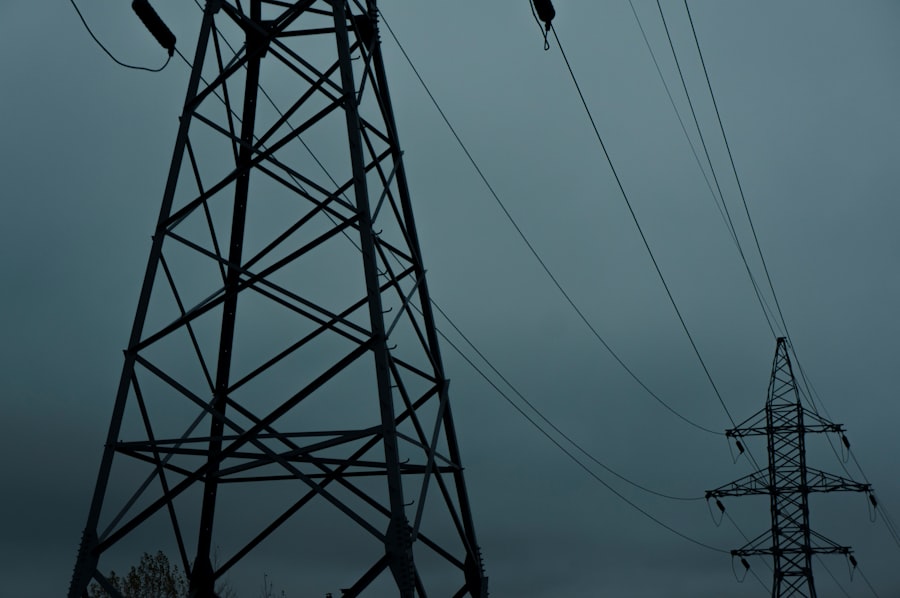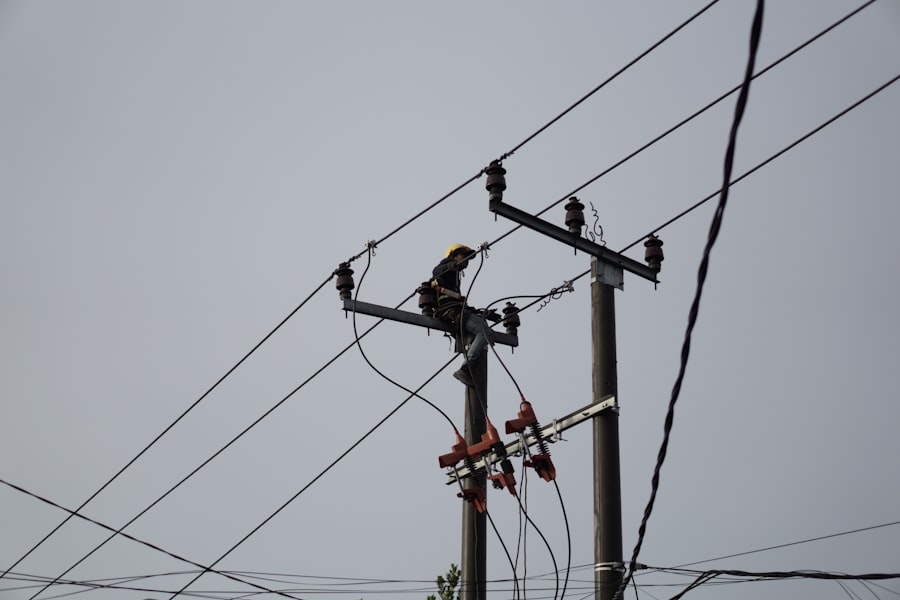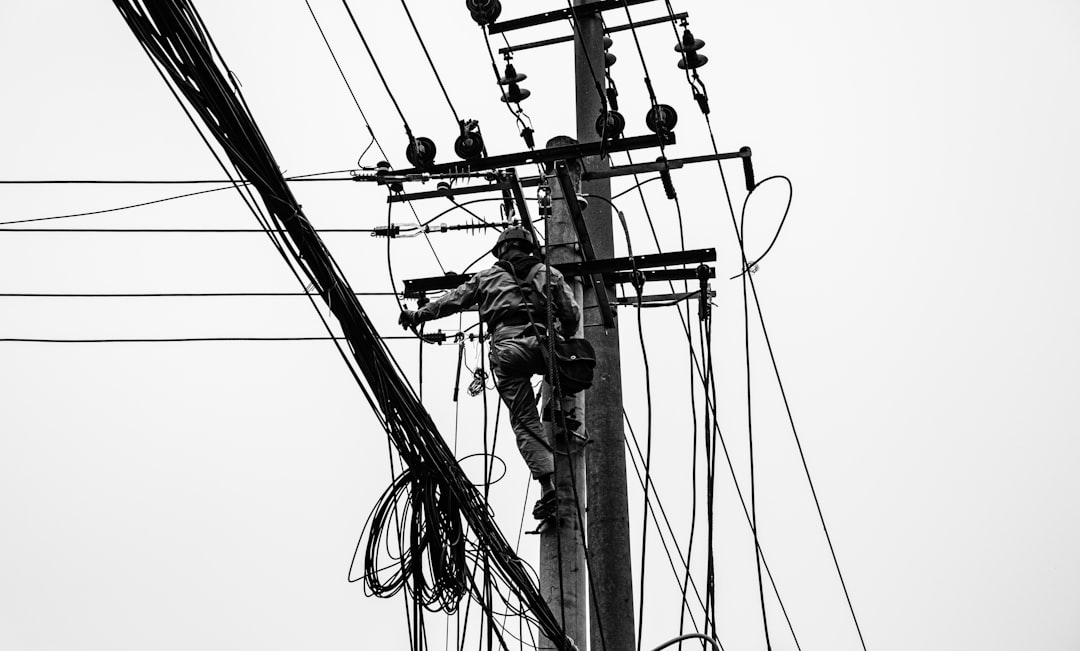The power company in question has found itself at a crossroads, grappling with a multitude of challenges that threaten its operational integrity and long-term viability. As the demand for reliable energy continues to rise, the company has faced increasing scrutiny over its ability to meet the needs of its customers. The issues at hand are not merely operational; they reflect deeper systemic problems that have accumulated over time.
From infrastructure deficiencies to management missteps, the company’s struggles are emblematic of broader trends within the energy sector, where aging systems and evolving regulatory landscapes create a perfect storm of complications. In recent years, the power company has experienced a series of setbacks that have eroded public trust and raised questions about its future. Customers have voiced their frustrations over service interruptions, rising costs, and a perceived lack of transparency.
As these issues mount, the company must confront the reality that its current trajectory is unsustainable. Addressing these challenges will require a comprehensive approach that not only identifies the root causes but also implements effective solutions to restore confidence among stakeholders.
Key Takeaways
- The power company faces multiple challenges including outdated infrastructure and poor equipment maintenance.
- Inefficient energy production and poor management decisions have worsened operational performance.
- Customer service issues and communication gaps have negatively affected public trust.
- Environmental regulations and community impacts add complexity to the company’s problems.
- Financial difficulties and low employee morale highlight the urgent need for strategic improvements.
Lack of investment in infrastructure
One of the most pressing issues facing the power company is its chronic underinvestment in infrastructure. Over the years, budget constraints and short-term financial planning have led to a significant backlog in necessary upgrades and replacements. Aging power lines, outdated substations, and insufficient grid capacity have all contributed to an unreliable energy supply.
This lack of investment not only hampers the company’s ability to deliver consistent service but also poses safety risks to both employees and customers. The consequences of neglecting infrastructure are far-reaching. Frequent outages disrupt daily life for residents and businesses alike, leading to economic losses and diminished quality of life.
Moreover, as the energy landscape evolves with the integration of renewable sources, the company’s outdated infrastructure becomes increasingly incompatible with modern energy demands. To remain competitive and meet regulatory requirements, it is imperative that the power company prioritizes infrastructure investment, ensuring that it can adapt to future challenges while providing reliable service to its customers.
Inadequate maintenance of equipment

In addition to insufficient investment in infrastructure, inadequate maintenance of existing equipment has exacerbated the power company’s challenges. Regular maintenance is crucial for ensuring that machinery operates efficiently and safely; however, budget cuts and resource constraints have led to a reactive rather than proactive approach.
The ramifications of poor maintenance extend beyond immediate operational disruptions. They can also lead to increased wear and tear on equipment, shortening its lifespan and necessitating even more significant investments in replacements down the line. Furthermore, when equipment malfunctions occur, they often require emergency responses that divert resources from other critical areas of operation.
By adopting a more strategic maintenance schedule and allocating sufficient resources for upkeep, the power company could mitigate these risks and enhance overall reliability.
Poor management decisions
| Metric | Description | Impact | Example |
|---|---|---|---|
| Employee Turnover Rate | Percentage of employees leaving the company within a year | High turnover indicates dissatisfaction and poor management | 25% annual turnover after restructuring |
| Project Failure Rate | Percentage of projects not meeting objectives or deadlines | Reflects poor planning and decision-making | 40% of projects missed deadlines in last fiscal year |
| Customer Satisfaction Score (CSAT) | Average rating from customer feedback surveys | Decline suggests poor strategic decisions affecting service | CSAT dropped from 85% to 70% in 6 months |
| Profit Margin Decline | Reduction in net profit as a percentage of revenue | Indicates inefficient resource allocation and cost control | Profit margin decreased by 10% over 1 year |
| Employee Engagement Score | Measure of employee motivation and commitment | Low scores correlate with poor leadership and morale | Engagement score fell from 75 to 55 in recent survey |
At the heart of many of the power company’s issues lies a series of poor management decisions that have failed to address underlying problems effectively. Leadership has often prioritized short-term gains over long-term sustainability, resulting in a reactive culture that struggles to adapt to changing circumstances. This approach has not only hindered operational efficiency but has also alienated employees and customers alike.
Moreover, a lack of clear vision and strategic planning has left the company vulnerable to external pressures. As competitors innovate and adapt to new technologies, the power company has lagged behind, unable to capitalize on emerging opportunities in renewable energy or smart grid technologies. To turn the tide, it is essential for management to adopt a forward-thinking mindset that embraces change and prioritizes long-term investments in both technology and human capital.
Inefficient energy production
Inefficient energy production processes further complicate the power company’s situation. The reliance on outdated technologies and fossil fuels has resulted in higher operational costs and increased emissions, which not only impact profitability but also raise concerns among environmentally conscious consumers. As global energy trends shift towards sustainability, the company’s failure to modernize its production methods could jeopardize its market position.
Transitioning to more efficient energy production methods is not merely an operational necessity; it is also a moral imperative in an era where climate change poses significant threats to communities worldwide. By investing in cleaner technologies and diversifying its energy portfolio, the power company can reduce its carbon footprint while simultaneously improving its bottom line. This shift would not only align with regulatory expectations but also resonate with a growing base of environmentally aware customers.
Customer service and communication problems

Customer service has emerged as another critical area where the power company has fallen short. Many customers report difficulties in reaching support representatives or receiving timely updates during outages or service disruptions. This lack of effective communication fosters frustration and distrust among consumers who rely on consistent energy supply for their daily lives.
To rebuild trust with customers, the power company must prioritize enhancing its customer service protocols. Implementing user-friendly communication channels, such as mobile apps or online portals, can facilitate better engagement with customers. Additionally, proactive communication during outages or maintenance work can help manage expectations and reduce anxiety among consumers.
By fostering a culture of transparency and responsiveness, the company can improve customer satisfaction and loyalty.
Environmental and regulatory challenges
The power company faces mounting environmental and regulatory challenges that complicate its operations further. As governments worldwide implement stricter regulations aimed at reducing carbon emissions and promoting renewable energy sources, the company must navigate a complex landscape of compliance requirements. Failure to adapt could result in hefty fines or loss of operating licenses, jeopardizing its future.
Moreover, public sentiment is increasingly shifting towards sustainability, with consumers demanding cleaner energy options. The power company’s reliance on traditional fossil fuels places it at odds with these expectations, potentially alienating a significant portion of its customer base. To address these challenges effectively, the company must develop a comprehensive environmental strategy that aligns with regulatory requirements while also appealing to environmentally conscious consumers.
Impact on local communities
The struggles faced by the power company have profound implications for local communities that depend on its services. Frequent outages and rising costs can lead to economic instability for businesses and households alike. In areas where energy access is already limited, these challenges can exacerbate existing inequalities and hinder community development efforts.
Furthermore, as the company grapples with its internal issues, it may inadvertently neglect its social responsibilities within these communities. Engaging with local stakeholders and investing in community initiatives can help rebuild trust and demonstrate a commitment to social responsibility. By prioritizing community engagement alongside operational improvements, the power company can foster goodwill while enhancing its reputation.
Employee morale and retention issues
Employee morale within the power company has suffered as a result of ongoing challenges and uncertainty about the future. High levels of stress due to increased workloads from understaffing or inadequate resources can lead to burnout among employees. This environment not only affects productivity but also contributes to high turnover rates as skilled workers seek opportunities elsewhere.
Providing opportunities for professional development, recognizing achievements, and ensuring competitive compensation can help create an environment where employees feel valued and motivated to stay with the company long-term. By investing in its workforce, the power company can enhance productivity while reducing turnover costs.
Financial struggles and debt
Financial struggles have become a significant concern for the power company as it grapples with mounting debt levels and declining revenues. The combination of inadequate investment in infrastructure, inefficient operations, and rising operational costs has strained financial resources. As debt levels rise, the company faces increasing pressure from creditors while simultaneously trying to maintain service quality for customers.
Addressing these financial challenges will require a multifaceted approach that includes cost-cutting measures, revenue diversification strategies, and potential restructuring efforts. By identifying areas where efficiencies can be gained without compromising service quality, the power company can begin to stabilize its financial position while exploring new revenue streams such as renewable energy projects or partnerships with local governments.
Potential solutions and steps for improvement
To navigate its myriad challenges successfully, the power company must adopt a comprehensive strategy focused on long-term sustainability and operational excellence. First and foremost, prioritizing infrastructure investment is crucial; this includes upgrading aging systems while implementing smart grid technologies that enhance efficiency and reliability. Additionally, fostering a culture of proactive maintenance will help mitigate equipment failures while extending asset lifespans.
Management must also embrace strategic decision-making that aligns with industry trends toward sustainability—this includes transitioning towards cleaner energy production methods that resonate with consumer preferences. Improving customer service through enhanced communication channels will be vital for rebuilding trust among consumers while addressing employee morale through supportive workplace initiatives will help retain skilled talent within the organization. Finally, addressing financial struggles through careful cost management alongside exploring new revenue opportunities will position the power company for future success in an evolving energy landscape.
By taking these steps toward improvement holistically rather than reactively addressing individual issues alone, the power company can emerge stronger from its current challenges while better serving its customers and communities alike.
If you’re experiencing issues with your power company, it may be helpful to explore the factors contributing to their struggles. A related article that delves into the challenges faced by utility companies can provide valuable insights. You can read more about this topic in the article found at this link. Understanding these issues can help you better navigate your options and advocate for reliable service.
WATCH THIS! The Debt Trap: Why Private Equity Wants Your Power Company
FAQs
Why might a power company be failing financially?
A power company may be failing financially due to factors such as rising operational costs, outdated infrastructure, regulatory challenges, increased competition, or poor management decisions.
Can power outages indicate that a power company is failing?
Frequent or prolonged power outages can be a sign of a power company struggling with maintenance, infrastructure issues, or insufficient investment, but they do not always mean the company is failing.
How do regulatory changes impact power companies?
Regulatory changes can affect power companies by imposing stricter environmental standards, altering pricing structures, or requiring investments in renewable energy, which can increase costs and affect profitability.
What role does infrastructure play in the success of a power company?
Reliable and modern infrastructure is crucial for efficient power generation and distribution. Aging or poorly maintained infrastructure can lead to inefficiencies, outages, and increased expenses, contributing to a company’s failure.
Can competition cause a power company to fail?
Yes, increased competition from alternative energy providers or deregulated markets can reduce a traditional power company’s market share and revenue, potentially leading to financial difficulties.
How do fuel price fluctuations affect power companies?
Power companies that rely on fossil fuels are vulnerable to fuel price volatility, which can increase operating costs and reduce profit margins, impacting their financial stability.
Is customer dissatisfaction a sign of a failing power company?
High levels of customer complaints about service quality, billing, or outages can indicate operational problems within a power company, which may contribute to its decline if not addressed.
What steps can a failing power company take to recover?
A failing power company can invest in infrastructure upgrades, diversify energy sources, improve customer service, restructure debt, and adapt to regulatory requirements to improve its financial health.
Are government interventions common in failing power companies?
Governments may intervene in failing power companies through bailouts, regulatory adjustments, or facilitating mergers to ensure continued service and protect consumers.
How does the shift to renewable energy impact traditional power companies?
The transition to renewable energy can challenge traditional power companies by requiring significant investment in new technologies and altering market dynamics, which can strain companies that fail to adapt.
